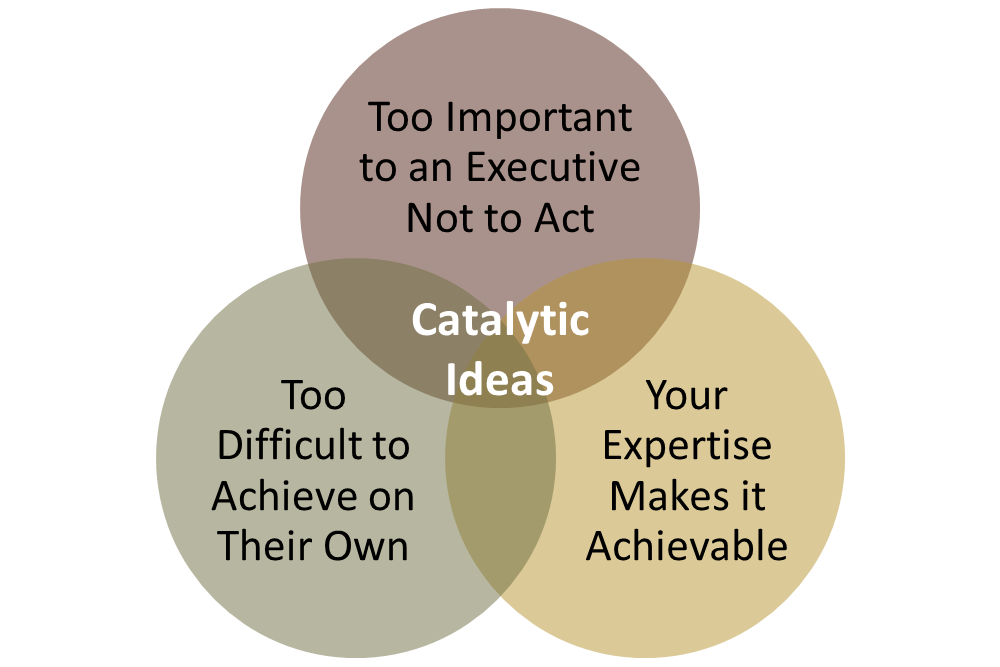This blog is part of a series on Leading with Ideas. To read the first blog in the series, click here .
We’ve looked at how Ideas work in the buying decision process; now let’s explore the qualities of an Idea that will motivate action by buyers.
Some Ideas are bigger than others – some require a bigger budget, some require more authority to move forward, but all good Ideas should draw the client into a discussion about the possibilities. Ideas that will catalyze purchase decisions sit at the intersection of three of the characteristics shown below.

Let’s look at some specifics of each characteristic
Too Important to an Executive Not to Act – The Idea must make this importance immediately evident, and while largely self-explanatory, this concept has two distinct subcomponents:
- The impact and value that the Idea brings to the organization across many potential measures, such as:
- Financial
- Competitive
- Prestige (e.g., preferred provider/partner/pupplier, preferred pmployer)
- Buyer’s personal/professional agenda
- Regulatory or compliance
- Quality
- Mission-driven or cultural imperatives
- Corporate objectives or directives
- Remaining independent (i.e., staving off acquisition)
- Protecting customers, markets, products, etc.
- Presenting the Idea to the correct executive in the organization; i.e., engaging an executive with budget and authority to act on the Idea (“above the Line of Safety”)
Your Expertise Makes It Achievable – The Idea unveils your point of view and demonstrates your expertise to achieve the goals of the Idea. The Idea may emphasize specific qualities that you bring to the solution, such as clarity, insight, independence, originality, empathy, and experience.
Too Difficult to Achieve on Their Own – The Idea must also implicitly or explicitly make clear that the client lacks the “ability” to attain the outcomes on their own because of various factors, including:
- Capabilities, skills, or expertise
- Culture
- Organization inertia
- Funding
- Stakeholder alignment
- Resources or bandwidth
- Experience
- Data, benchmarks, or best practices
- Understanding the barriers
- Knowing “how to”
- Knowing “how to”
As you develop advisory relationships with clients, you are likely to discuss or advise them on topics or ideas that do not meet all three characteristics, which helps build intimacy, and therefore, is vital. These are not the “Catalytic Ideas” that will drive buying from you. Thus, your organizational focus should be on building out a portfolio of these Catalytic Ideas to drive business and move you forward to the demand generation point of the buying cycle (as discussed in a prior post).
